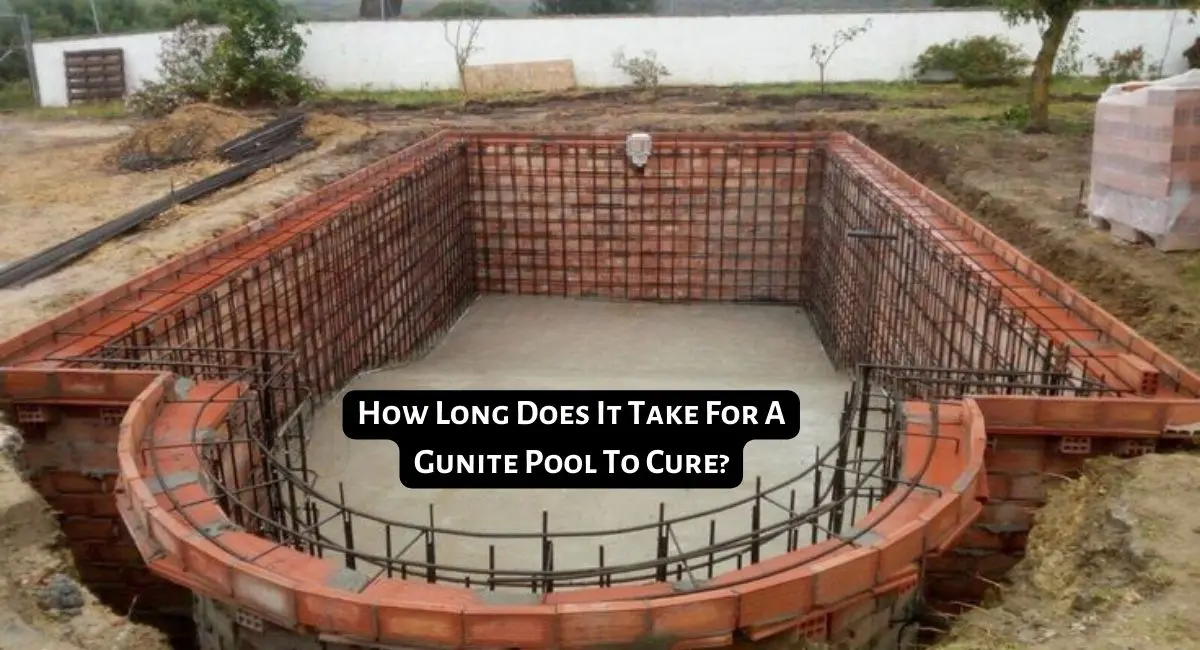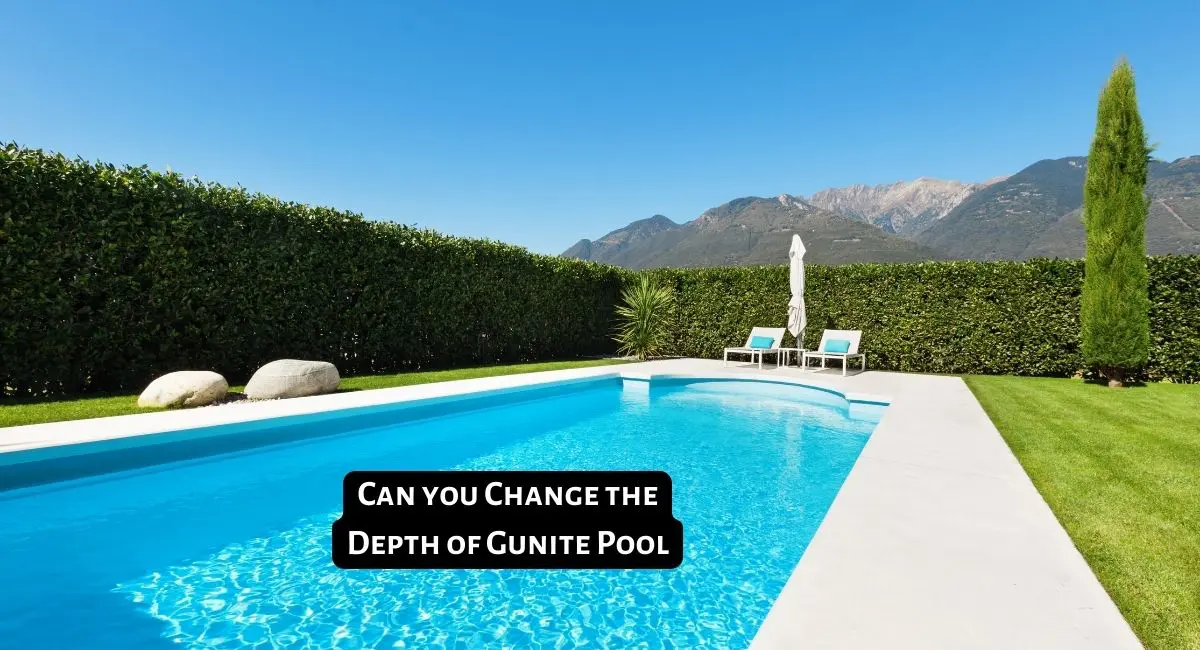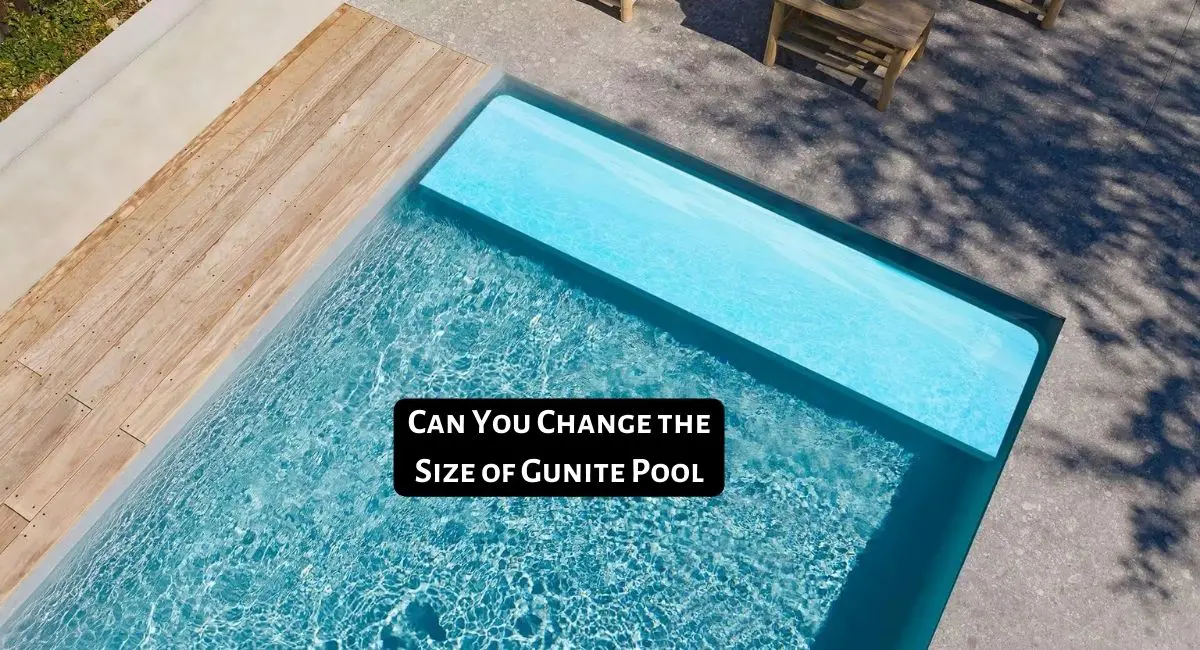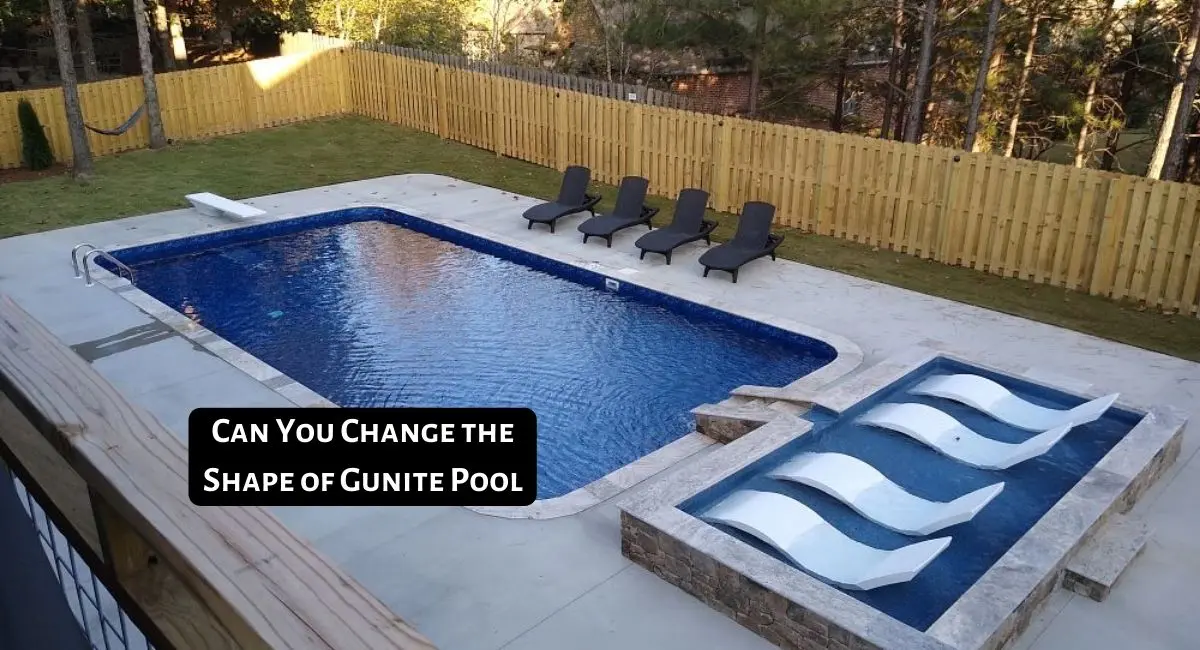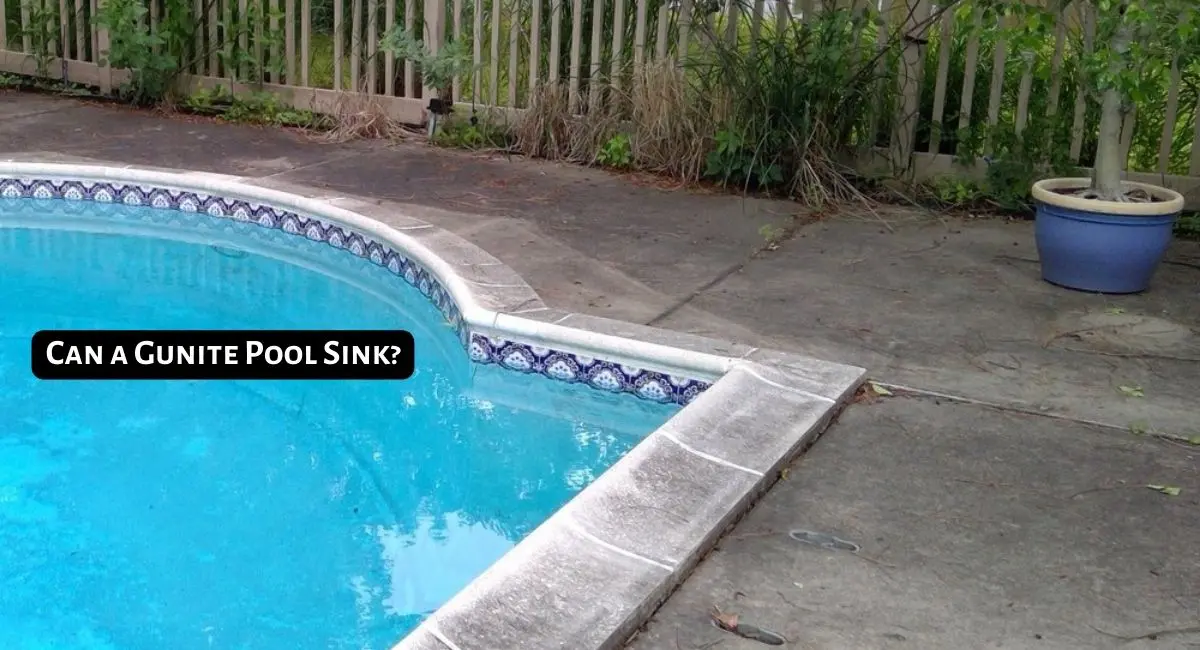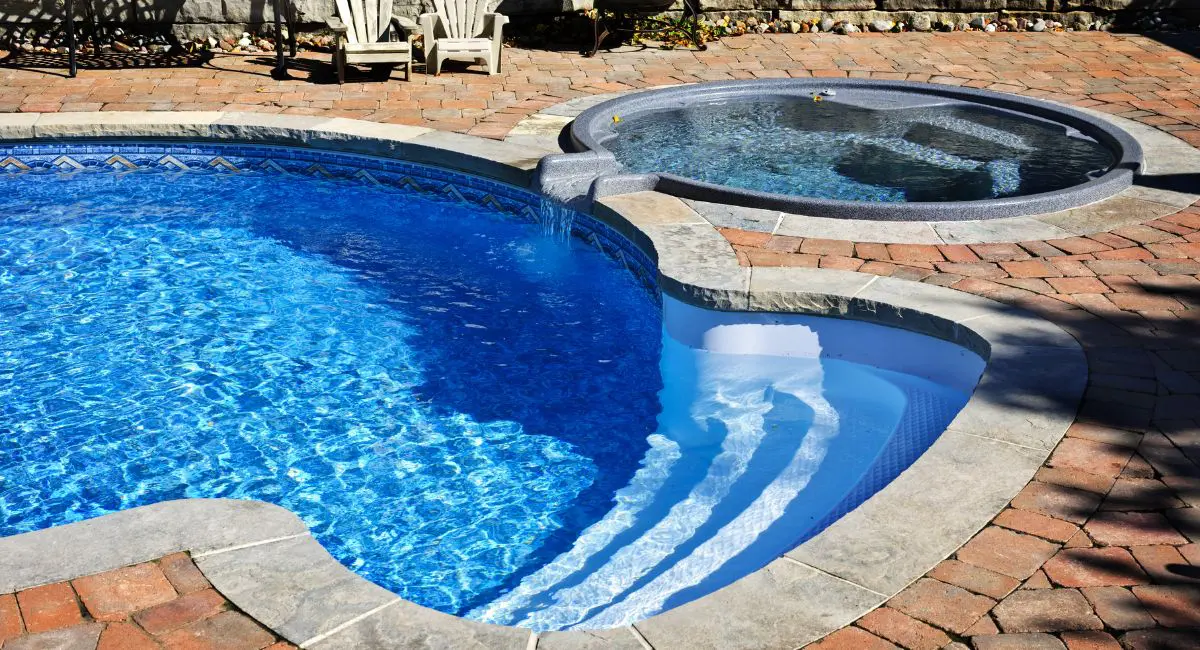Dolphin Nautilus CC Plus Wi-Fi Automatic Robotic Pool Vacuum Cleaner, Always Cleaning, Never Charging, with Wall Climbing Scrubber Brush, Ideal for In-Ground Pools up to 50 FT in Length
- ALWAYS CONNECTED: With the Dolphin Nautilus CC Plus robotic pool vacuum cleaner, schedule your pool cleanings from anywhere with always connected Wi-Fi.
Hayward W3PVS20JST Poolvergnuegen Suction Pool Cleaner for In-Ground Pools up to 16 x 32 ft. (Automatic Pool Vaccum)
- The Hayward Poolvergnuegen 2-Wheel Suction PoolCleaner features patented self-adjusting turbine vanes that deliver maximum power at any flow and allow passage of large debris
Taylor Pool Water Test Kit, Complete Swimming Pool Water Test Kit, for Chlorine, pH, and Alkaline Levels, Ideal for Pools, Hot Tubs, and Spas, 1-Pack
- Comprehensive Pool & Spa Test Kit: Ensure your pool, hot tub or spa is safe and balanced with this all-in-one testing kit. It checks for free and total chlorine, pH, acid/base demand, total alkalinity, calcium hardness, and cyanuric acid.
POOL BLASTER Max Cordless Pool Vacuum for Deep Cleaning & Strong Suction, Handheld Rechargeable Swimming Pool Cleaner for Inground and Above Ground Pools, Hoseless Pool Vac by Water Tech
- DESIGNED & ENGINEERED IN USA: Comes with a 1-year warranty and USA-based customer service. USA-based business with over 20 years of experience in building cordless handheld pool vacuums
AquaChek Select Connect 7-Way Pool and Spa Test Strips Complete Kit - Pool Test Strips for pH, Total Chlorine, Free Chlorine, Bromine, Alkalinity, Total Hardness, and Cyanuric Acid - (50 Strips)
- 7-IN-1 TEST STRIPS: Tests the most critical parameters: pH, Total Chlorine, Free Chlorine, Bromine, Alkalinity, Total Hardness, & Cyanuric Acid
Gunite pool curing refers to the process that allows the gunite material, a mixture of cement, sand, and water, to harden and strengthen after it is sprayed onto the pool’s structural frame. The curing process initiates a series of chemical reactions, primarily hydration, where the cement reacts with water to form a hard and durable matrix that binds the sand particles together, solidifying the overall structure of the pool.
The curing process doesn’t simply mean drying; instead, it involves maintaining a certain level of moisture for an optimal period to allow the hydration reactions to occur adequately. During this time, the gunite gradually hardens and increases in strength, reaching its maximum hardness and strength at the end of the curing period.
However, there is some confusion surrounding the duration of the gunite pool curing process. In this article, we will explore how long it takes for a gunite pool to cure and the importance of proper curing for the longevity of the pool structure.
Table of Contents [show]
Key Takeaways
- Gunite pool curing is the process of hardening and strengthening the gunite material after it is sprayed onto the pool’s structural frame.
- Curing involves maintaining a certain level of moisture to allow hydration reactions, leading to increased strength and hardness.
- Proper curing prevents cracks, enhances resistance to damage, ensures long-term durability, and promotes proper bonding between concrete and coatings.
- The gunite curing process takes around 28 days or more, but this can vary depending on factors such as climate, mix design, and project size.
- Filling the pool before the curing period is over can lead to cracking, leaks, and structural instability.
- Signs of improper curing include surface cracks, discoloration, delamination, spalling, and reduced structural integrity.
- Watering gunite during the curing process is crucial, and specific recommendations include lightly and evenly moistening, controlling frequency and duration, avoiding standing water, and gradual moisture reduction.
- Climate impacts the curing process; hot weather accelerates it, cold weather slows it down, and high humidity prolongs it.
- Proper pool chemistry is essential for curing, with ideal pH levels, clean and balanced water, and avoidance of poor water chemistry-related issues.
- Some methods can potentially speed up the curing process, but consulting professionals and adhering to guidelines is crucial.
- Curing is different from drying; drying occurs after curing and involves removing excess moisture from the gunite surface to prepare for subsequent finishes.
- After curing, gunite does not require a specific “drying” period, as surface moisture will naturally evaporate over time, typically taking a few days to a couple of weeks.
Importance of Proper Curing
The proper curing of a pool structure is of utmost importance for its longevity and durability. Curing refers to the process of maintaining suitable conditions, such as temperature and moisture, to allow concrete to gain strength and endurance over time. Here’s why proper curing is important for the longevity of a pool structure:





- Prevention of Cracks: Proper curing helps prevent the formation of cracks in the pool structure. The curing process allows the concrete to develop its full strength, reducing the likelihood of cracking.
- Increased Resistance to Damage: Adequate curing enhances the resistance of the pool structure to damage and wear. It improves the durability of the concrete, enabling it to withstand the stresses and pressures it may encounter over its lifespan.
- Long-Term Durability: Properly cured concrete exhibits improved long-term durability. The curing process allows the concrete to reach its full potential in terms of strength and structural integrity, ensuring that the pool structure can withstand the test of time.
- Enhanced Chemical Hydration: Curing facilitates the thorough chemical hydration of cementitious materials in freshly poured concrete. This hydration process contributes to the development of the desired properties of the concrete, enhancing its overall quality and performance.
- Proper Bonding: Adequate curing promotes proper bonding between the concrete and any surface coatings or finishes applied to the pool structure. This ensures that the coatings adhere securely and contribute to the longevity of the pool surface.
- Avoidance of Water Damage: Proper curing can help prevent water damage to the pool structure and its surrounding areas. Adequate drainage during the curing process ensures that excess water does not accumulate and cause structural or landscaping issues.
- Cost Savings: Investing in proper curing techniques can lead to significant cost savings in the long run. By ensuring that the pool structure is adequately cured, the need for repairs or premature replacements due to issues like cracks or degradation can be minimized.
The Gunite Curing Process
The gunite curing process involves the hardening and strengthening of the gunite material after it is applied. Gunite, also known as shotcrete or sprayed concrete, is a mixture of cement, sand, and water that is pneumatically projected at high velocity onto a surface. Here is a comprehensive overview of the gunite curing process:
- Application: Gunite is applied to the desired surface using a hose or nozzle. The mix is projected with high velocity, ensuring it adheres firmly to the surface. To know more about gunite application, read our article on how long does it take to gunite a pool.
- Hydration: After the gunite is applied, the curing process begins. Gunite undergoes hydration, which is a chemical reaction between the cement and water. This reaction causes the cementitious mixture to transform from a liquid state to a solid, hardened material.
- Moisture Control: During the curing process, it’s important to control the moisture content of the gunite. This can be achieved by misting the surface with water or covering it with wet burlap. Maintaining a certain level of moisture is crucial for proper curing and preventing excessive moisture loss or drying, which can lead to cracking and shrinkage.
- Time and Temperature: The curing time for gunite can vary based on factors such as climate, mix design, and application techniques. Typically, gunite requires a curing period of around 28 days or more. During this time, the gunite gradually hardens and increases in strength. Temperature can also affect the curing process, with warmer temperatures generally accelerating the curing time.
- Quality Assurance: It is important to ensure that the gunite is properly cured to achieve the desired strength and durability. Professional guidance and adherence to industry standards and best practices are recommended. Consulting with experts in pool construction or engineers can help ensure a successful and effective curing process.
By following these steps and considering the factors that influence the curing process, gunite can achieve its maximum hardness and strength, providing a durable and long-lasting surface. Proper curing is crucial for the structural integrity and longevity of gunite applications, such as swimming pools, tunnels, or other concrete structures.
How Long Does It Take For A Gunite Pool To Cure
Gunite pools typically require a curing time of around 28 days or more before the next phase of construction can begin. During this time, the gunite mixture of cement and sand needs to cure to reach its design strength, which is usually 4,000 to 4,500 PSI.
However, it’s important to note that this is a general guideline and can vary depending on several factors. Here are some factors that can influence the curing time of a gunite pool:
- Moisture Control: Proper moisture control is essential during the curing process. Maintaining a certain level of moisture allows the hydration reactions to occur adequately. If the gunite dries out too quickly, it can lead to a weak and brittle structure. Conversely, excessive moisture can cause issues like cracking and shrinkage.
- Temperature and Climate: Temperature and climate conditions play a significant role in gunite curing. Higher temperatures can accelerate the curing process, while lower temperatures can slow it down. It’s important to consider the ambient temperature and humidity levels during the curing period.
- Project Size and Complexity: The size and complexity of the project can impact the curing time. Larger projects with a greater surface area may require more time for the gunite to cure properly. Additionally, intricate designs or structures with challenging shapes can affect the curing time due to the need for more precise application of the gunite material.
- Mix Design and Material Ratios: The mix design and material ratios of the gunite mixture can influence the curing time. The composition of the cement, sand, and water mixture can be adjusted to achieve specific curing characteristics. The ratio of these components and the addition of additives or accelerators can impact the curing time.
- Application Techniques: The method and technique used for applying the gunite can affect the curing time. Factors such as the spraying pressure, nozzle distance, and layer thickness can influence how the gunite cures. It’s important to follow proper application guidelines to ensure uniform curing and optimal strength development.
It’s worth noting that gunite curing typically takes several weeks to reach its maximum hardness and strength. The curing process is not simply drying but involves maintaining the right level of moisture and allowing sufficient time for the chemical reactions to occur. Rushing or compromising the curing process can lead to long-term structural issues and decreased durability of the pool.





What Happens if You Fill the Pool Before the Curing Period is Over
Filling a gunite pool before the curing period is over can have serious consequences and can compromise the structural integrity of the pool. Here are some potential issues that can arise:
- Cracking: If the gunite has not fully cured, it may be more susceptible to cracking or developing other structural issues when filled with water. Proper curing allows the gunite to gradually harden and increase in strength, ensuring its ability to withstand the pressure exerted by the water in the pool.
- Leaks: The pressure from the water can cause leaks in the gunite shell if it has not fully cured. Adequate curing ensures that the gunite forms a solid and impermeable structure, minimizing the risk of water leakage.
- Structural Instability: The curing process allows the gunite to develop its maximum strength and stability. Filling the pool before this process is complete can compromise the structural integrity of the pool. The weight and pressure of the water can cause premature settling or shifting of the gunite, leading to cracks, leaks, or uneven distribution of stress within the pool’s structure.
- Surface Imperfections: During the curing period, the gunite surface undergoes a chemical curing reaction and gradual drying. Filling the pool prematurely can result in surface imperfections such as cracking, crazing, or scaling. These imperfections can mar the visual appearance and may require costly repairs in the future.
It’s important to wait until the gunite has fully cured before filling the pool with water to ensure that it is structurally sound and will last for years to come.
Signs That a Gunite Pool Has Not Cured Properly
Proper curing is essential for the long-term durability and structural integrity of a gunite pool. If a gunite pool has not cured properly, there may be signs indicating potential issues. Here are some signs to watch for that may indicate inadequate curing:
- Surface Cracks: One of the most noticeable signs of improper curing is the presence of cracks on the pool’s surface. These cracks may appear shortly after the pool is completed or even months later. Cracks can indicate that the curing process was rushed, the concrete mixture was incorrect, or the temperature conditions during curing were not ideal.
- Discoloration or Staining: Improper curing can also result in discoloration, mottling, or staining of the pool surface. This can occur due to uneven drying, water imbalances, or inadequate curing techniques. Discoloration may appear as dark or light patches or an overall dullness of the pool surface.
- Delamination or Spalling: Delamination refers to the separation of layers within the pool’s surface, while spalling is the chipping or flaking of the surface layers. These issues can be an indication that the gunite did not adhere properly or that the curing process was compromised. Delamination and spalling may occur due to inadequate moisture control, extreme temperature fluctuations, or insufficient curing time.
- Reduced Structural Integrity: If a gunite pool has not cured properly, it may experience diminished structural integrity. This can result in a pool that feels unstable or has areas that appear weak. In severe cases, it may even lead to leaks or structural failure. Poor curing practices can compromise the overall strength and stability of the pool, affecting its longevity.
- Excessive Roughness or Texture Variations: Improper curing can result in an excessively rough or uneven texture on the pool surface. This can occur when the concrete mixture is not properly mixed, or the curing process is rushed. Texture variations may be noticeable visually or felt when touching the pool surface.
If you observe any of these signs in your gunite pool, it is important to contact a pool professional or builder promptly. They can assess the situation and provide appropriate recommendations for remediation. Timely action can help prevent further damage and ensure that the pool is repaired and properly cured to maintain its structural integrity and longevity.
Specific Recommendations for Watering Gunite
Watering gunite during the curing process is crucial for its strength and durability. To ensure proper hydration and achieve the best results, below are some specific recommendations for watering a concrete pool shell or finished surface. For a more detailed guide, refer to our how to properly water your new gunite pool article.
- Lightly and Evenly Moistening: The goal of watering is to keep the concrete surface lightly and evenly moist to prevent it from drying out too quickly. Avoid over-watering, as excessive moisture can lead to weakened concrete. Use a fine mist or gentle spray to apply water evenly across the surface. This helps to maintain consistent moisture levels and promotes uniform curing.
- Watering Frequency and Duration: In the first 3-4 days after the concrete is poured, it is important to water the surface regularly to maintain the desired moisture levels. Generally, the surface should be watered 3-4 times a day, with each watering session lasting about 5-10 minutes. Adjust the frequency and duration based on temperature conditions and concrete moisture levels to prevent rapid drying or excessive moisture.
- Gradual Moisture Reduction: After the initial 3-4 days, gradually reduce the frequency of watering while continuing to monitor the moisture levels. As the concrete cures, it becomes less dependent on external moisture for hydration. Reduce the watering sessions to 2-3 times a day, and gradually decrease the duration of each session. This helps the concrete to further strengthen and develop its structural integrity.
- Avoid Standing Water: While it is important to keep the concrete surface moist, be cautious not to allow standing water to accumulate. Standing water may lead to overly saturated areas, which can cause uneven curing and potential weakening of the concrete. Ensure proper drainage and monitor the surface to remove any excess water.
- Gentle Temperature Changes: Avoid sudden temperature changes during the curing process, as they can result in surface issues such as crazing (fine cracks). Gradual temperature changes help prevent thermal stress and ensure uniform curing. If possible, provide shade or protection from extreme heat or cold, and avoid direct exposure to sunlight during the initial curing period.
The Impact of Climate on Gunite Pool Curing
The climate in which a gunite pool is being constructed can greatly affect the curing time and process. Different weather conditions, such as hot, cold, or humid climates, can influence the rate at which the gunite cures and reaches its full strength. Here’s a closer look at how climate can impact the curing of a gunite pool:
- Hot Weather: In hot weather, the curing process of gunite can be accelerated due to the increased temperature. The heat causes the water in the concrete mixture to evaporate more quickly, leading to faster drying. While this may seem beneficial for speeding up construction, it can negatively impact the curing process. Rapid drying can result in shrinkage cracking and reduced overall strength. To mitigate this, it’s important to take precautions such as keeping the gunite surface moist and protected from direct sunlight during the curing period.
- Cold Weather: In cold weather, the curing process of gunite slows down significantly. Low temperatures can hinder the chemical reactions necessary for hydration and strength development. If the temperature drops below freezing, it can even halt the curing process altogether. To combat the challenges of cold weather, additional measures may be required. These can include using additives or accelerators in the concrete mixture to promote proper curing, providing insulation or temporary enclosures to maintain warmer temperatures, and adjusting the curing timeline accordingly.
- Humid Weather: High humidity levels can prolong the curing process of gunite. Excess moisture in the air can prevent the concrete from drying at an optimal rate. This can result in extended curing times and potential issues such as surface discoloration or the growth of mold and mildew. Adequate ventilation and moisture control measures should be implemented to ensure proper curing in humid climates.
The Role of Pool Chemistry in the Curing Process
While often overlooked, pool chemistry plays a significant role in the curing process of a gunite pool. Proper water chemistry is essential for the curing of gunite and the long-term durability of the pool structure. Here are some key aspects to consider regarding the role of pool chemistry in the curing process:
- Water Chemistry and Hydration: Water is a crucial component in the curing process, as it reacts with the cement in the gunite mixture to initiate hydration. The quality and composition of the water used in the pool affect the hydration process. The water should be clean, free from contaminants, and have a balanced mineral content. Excessive minerals or impurities in the water can affect the curing and strength development of the concrete.
- Ideal pH Levels: pH levels play a vital role in the curing process. Maintaining a proper pH range around neutral (7.2-7.6) is important for optimal curing. Incorrect pH levels can impact the chemical reactions occurring during hydration and affect the overall strength of the cured concrete. Regular testing and maintenance of the pool water’s pH levels are necessary to ensure the proper curing of the gunite.
- Potential Issues Caused by Poor Water Chemistry: Poor water chemistry can hinder the curing process and have negative effects on the pool structure. High pH or unbalanced water chemistry can lead to mineral scaling, which can discolor or damage the gunite surface. Low pH or corrosive water can lead to the degradation of the pool structure over time. Correct water chemistry is crucial for preventing these issues and ensuring the long-term durability of the gunite pool.
Is There a Way to Speed Up the Curing Process
The curing process of gunite, which is a spray-on product used to coat pool walls and floors, is crucial for ensuring the strength and durability of the pool. While it’s important to allow the gunite to cure thoroughly under proper conditions, there are some techniques that can potentially speed up the curing process. Here are a few possible methods:
- Keep the pool wet: Wetting down the gunite shell for 7 days after it is shot can help accelerate the curing process. This is done by regularly spraying the gunite with water to maintain moisture. However, it’s important to ensure that the water application is controlled to prevent excessive saturation or pooling of water, which can lead to surface defects.
- Use a curing compound: Applying a curing compound to the gunite surface can promote faster and more uniform curing. Curing compounds are liquid coatings that are sprayed or rolled onto the gunite. They create a barrier that helps retain moisture and prevent rapid evaporation, allowing for proper hydration of the cement. Curing compounds can also provide some protection against temperature fluctuations and help reduce the risk of cracking.
- Control the environment: Maintaining consistent temperature and humidity levels in the pool area can contribute to faster curing. It is beneficial to keep the temperature within the recommended range and avoid extreme temperature fluctuations, as they can affect the curing process. Additionally, controlling the humidity can help prevent rapid moisture loss from the gunite surface, promoting more gradual and thorough curing.
- Avoid heavy rain: Heavy rainfall can delay the curing process by washing away curing compounds, saturating the gunite excessively, or causing pooling of water on the surface. It is important to cover the pool or remove any debris that may cause water to accumulate during rain events. By preventing excessive moisture, the curing process can proceed more effectively.
It’s important to note that while these methods may potentially speed up the curing process, the exact impact can vary depending on various factors, such as climate conditions, specific mixtures used, and the curing requirements of the particular gunite product. It’s recommended to consult with professionals and adhere to manufacturer guidelines to achieve the best results.
What is the Difference Between Curing and Drying of Gunite
The terms “curing” and “drying” are often used interchangeably, but in the context of gunite, they refer to different processes:
Curing
Curing refers to the chemical reaction and hardening process that occurs after gunite application. When gunite is mixed and applied, it undergoes a hydration process in which water reacts with the cement particles, forming a binder that holds the mixture together. This hydration process continues over time, gradually increasing the strength and durability of the gunite. Curing is crucial for the development of the full structural integrity and long-term performance of the pool.
During the curing process, the gunite is typically moistened to maintain optimal moisture levels and promote proper hydration. This helps ensure uniform strength development throughout the concrete structure. The curing period for gunite pools is typically a minimum of 28 days. It is important to follow proper curing techniques and guidelines, including regular moistening of the gunite surface during this period, to achieve the desired strength and longevity of the pool.
Drying
Drying refers to the process of removing excess moisture from the gunite surface to achieve an acceptable level of water content. After the initial hydration and curing process, the gunite needs to dry to a certain extent to be ready for subsequent finishings, such as plaster or tiling. Drying involves allowing the surface moisture to evaporate gradually, which is typically done over a period of several days.
During the drying phase, the gunite surface is no longer actively going through the hydration process. Instead, the primary objective is to remove surface moisture so that subsequent finishes can be applied effectively. Proper drying techniques, including monitoring the surface moisture levels and allowing sufficient drying time, are important to ensure optimal adhesion and performance of the finishing materials.
How Long Does It Take for Gunite to Dry After Curing
After the curing process, gunite does not require a specific “drying” period like other materials. Gunite, being a sprayed concrete mixture, cures by a chemical reaction that allows it to harden and gain strength over time. Once the curing process is complete, the surface moisture of the gunite will gradually evaporate naturally.
The rate at which the gunite surface dries after curing can vary depending on factors such as temperature, humidity, airflow, and the specific environmental conditions. Generally, it can take a few days to a couple of weeks for the gunite surface to adequately dry and be ready for subsequent finishes, such as plaster or tiling.
It’s important to note that the drying time can also be influenced by local climate conditions. Higher temperatures, lower humidity, and good airflow can contribute to faster drying. However, it is crucial to follow the recommendations of your pool builder or contractor, as they will be able to provide specific guidelines based on the local climate and conditions specific to your pool project.
During the drying period, it is essential to avoid any additional moisture exposure to the gunite surface. This includes avoiding rain or excessive irrigation. Proper monitoring and adherence to the recommended drying time will help ensure optimal adhesion and performance of the subsequent finishes applied to the gunite pool.
Myths and Misconceptions about Gunite Pool Curing
When it comes to gunite pool curing, there are several myths and misconceptions that can lead to confusion or improper practices. Let’s address some common misconceptions and clarify the facts surrounding the curing process:
Myth: Gunite pools can be fully cured in a few days.
Fact: While gunite pools may appear solid after a few days, it actually takes a minimum of 28 days for gunite to fully cure and reach its maximum design strength. The initial days are crucial, but patience is necessary to allow for complete curing.
Myth: Adding more water during curing will enhance strength.
Fact: Adding excess water during the curing process can actually weaken the concrete. Proper hydration is achieved through the correct mixture of cement, sand, and water during the initial application. Adding water afterward can dilute the mixture and compromise the strength of the gunite.
Myth: Spraying the gunite surface with water for a couple of days is sufficient for curing.
Fact: While initial surface wetting is necessary, proper curing requires regular and consistent moisture for at least 7 days. This involves lightly and evenly moistening the gunite surface multiple times a day. Adequate curing time allows the concrete to develop its maximum strength potential.
Myth: Curing is unnecessary if a pool is finished with plaster or tile.
Fact: Curing is essential regardless of the final finish applied to a gunite pool. Even with plaster or tile, proper curing is vital for the structural integrity and long-term durability of the pool. Skipping or neglecting the curing process can lead to issues such as cracking, shrinking, or reduced strength.
Myth: Longer curing means stronger concrete.
Fact: While 28 days is the minimum duration for curing, it does not mean that extending the curing period beyond this timeframe will result in significantly stronger concrete. The majority of the strength is developed within the initial 7 days of curing, with only minor strength gains occurring afterward.
Delve into the art of building a gunite pool through our comprehensive guides. Whether you’re a seasoned pool builder or a first-timer, these resources will equip you with the knowledge and expertise needed for a successful project.
How Are Gunite Pools Built: Step-by-step guide to constructing your own gunite pool, covering the planning, excavation, construction, and finishing processes to help you create a stunning and durable pool.
How Long Does Building a Gunite Pool Take: Understand the estimated timeline for building a gunite pool, including factors that may affect the duration, and get ready for your dream pool in no time.
Should a Gunite Pool Be Built in Cold Weather: Learn about the feasibility of constructing gunite pools during colder seasons and the necessary precautions to ensure a successful build despite the weather conditions.
Methods to Waterproof a Gunite Pool: Ensure your gunite pool remains leak-free and resilient by exploring effective methods and products for waterproofing, protecting it from water-related issues.
Conclusion
The proper curing of gunite is crucial for the long-term success and durability of a gunite pool. Curing involves allowing the cementitious mixture to undergo hydration and form a solid, hardened material that provides strength and structural integrity to the pool. This process requires maintaining a certain level of moisture for an optimal period to facilitate the necessary chemical reactions.
While drying is part of the overall process, it is not sufficient on its own to ensure the desired properties of the gunite. Simply allowing the gunite to dry without proper curing can lead to issues such as inadequate bonding, cracks, or other failures in the pool coatings.
Therefore, it is important to exercise patience and follow the recommended curing procedures to achieve the best results. Rushing the process or neglecting proper curing can have long-term consequences for the pool’s integrity and performance.
Frequently Asked Questions
1. When should I start wetting my gunite?
It is generally recommended to start wetting the gunite immediately after application and continue doing so for about 7 to 10 days. The frequency and duration of wetting can vary depending on the specific recommendations provided by your pool contractor. The goal is to keep the gunite surface consistently moist during the initial curing phase to ensure optimal hydration and strength development.
2. What happens if it rains after gunite?
Rainfall during the gunite curing process can have an impact on the quality of the gunite and its curing conditions. Excessive moisture from heavy rain can disrupt the curing process, potentially leading to improper curing, cracking, or delamination of the gunite. It is crucial to protect the gunite from rainfall and maintain proper curing conditions. Pool contractors may employ various measures to shield the gunite, such as covering it with tarps or using temporary structures to prevent water from reaching the surface.
3. What is the best temperature for gunite to cure?
The ideal temperature range for gunite curing is typically between 50°F and 85°F (10°C to 29°C). Moderate temperatures provide optimal conditions for the curing process. Higher temperatures can accelerate the curing process, but excessive heat may cause rapid drying, leading to shrinkage and potential cracking. On the other hand, lower temperatures can slow down the curing process. Maintaining a consistent and moderate temperature within the recommended range is beneficial for achieving proper hydration and curing of the gunite.
4. How does humidity affect the curing process of gunite?
During curing, the cement in the gunite mixture undergoes hydration, where it reacts with water to form a hardened and durable matrix. Adequate moisture is necessary for this chemical reaction to occur effectively. In high humidity conditions, the air already contains a significant amount of moisture, which helps to maintain the necessary moisture levels in the gunite. This facilitates proper hydration and curing of the material. However, in extremely dry conditions or low humidity, the moisture in the gunite can evaporate too quickly, leading to insufficient curing and potential issues such as cracking or inadequate strength development.
